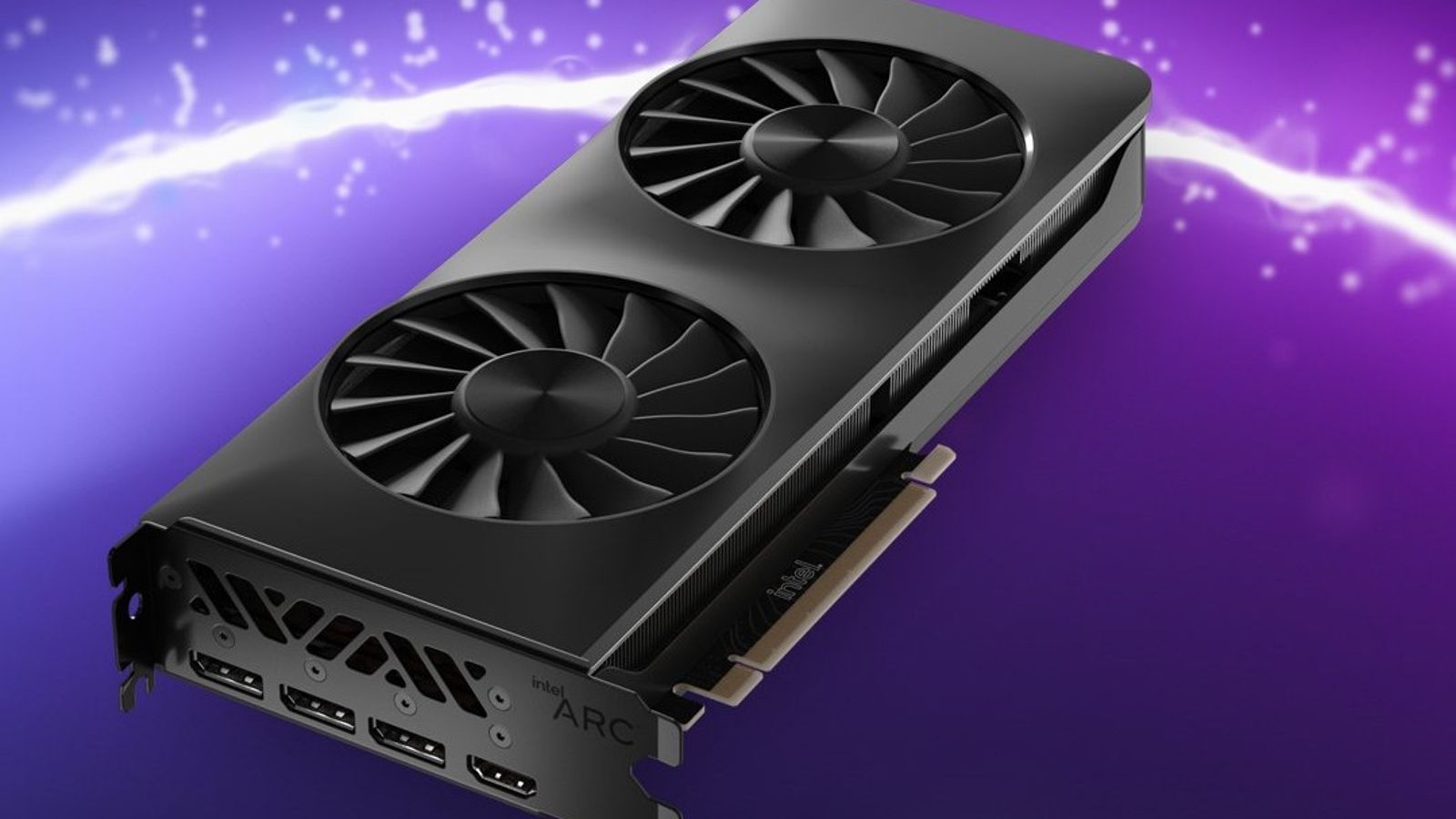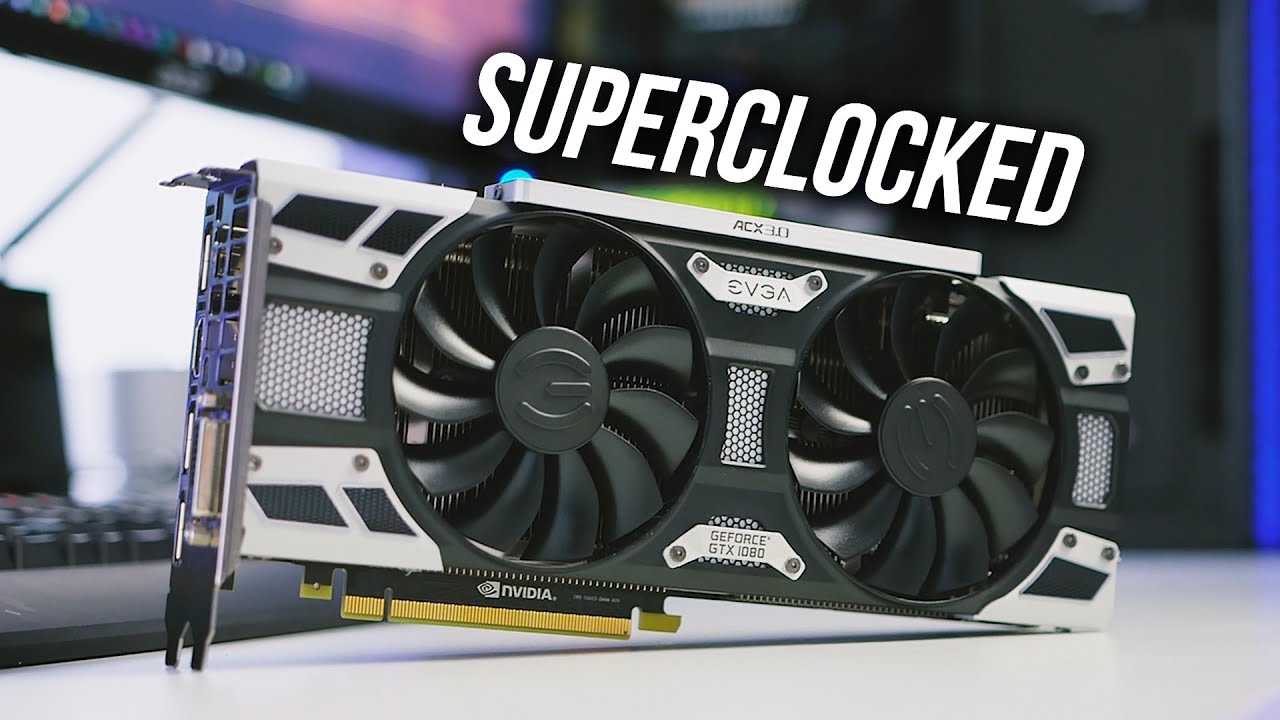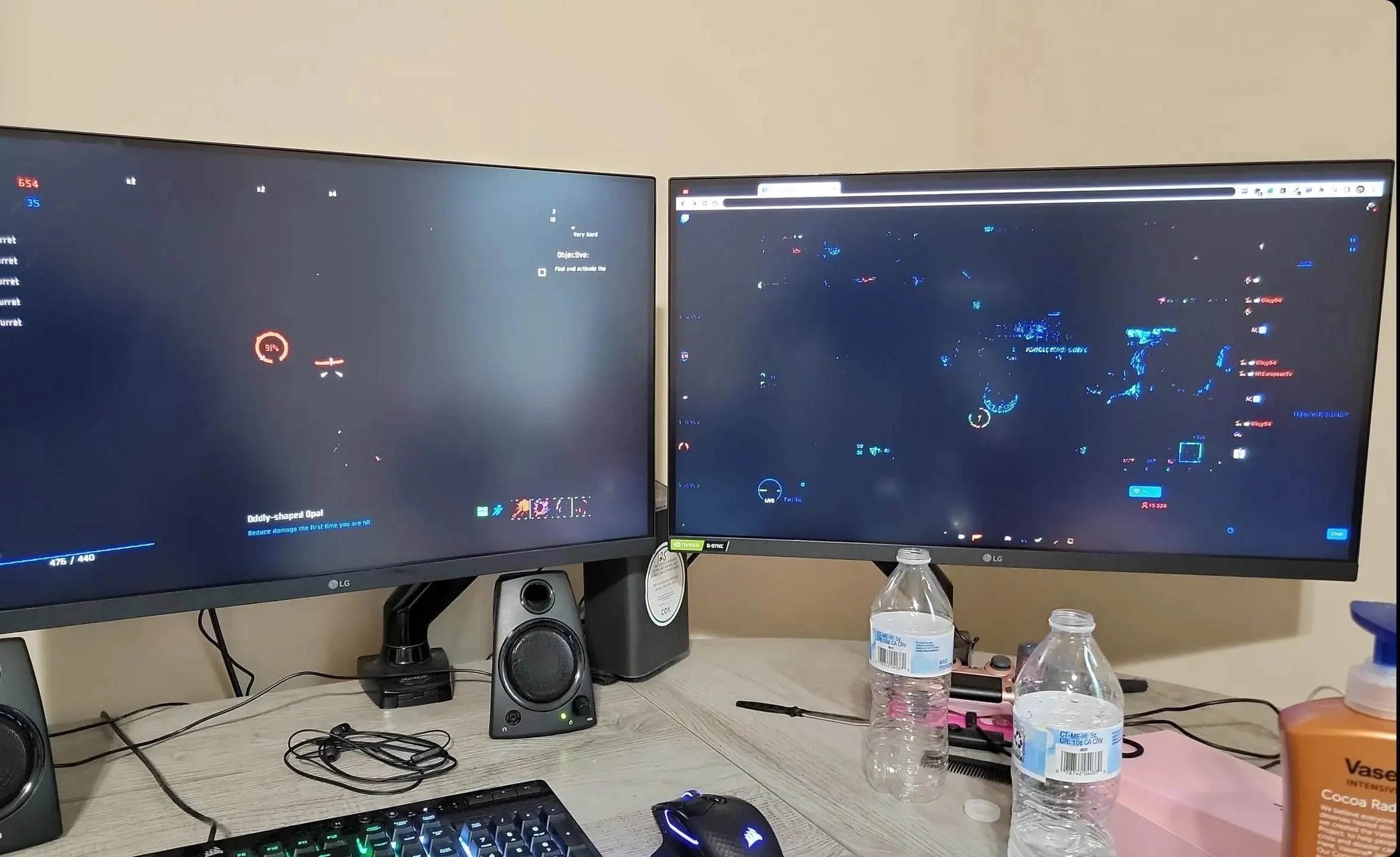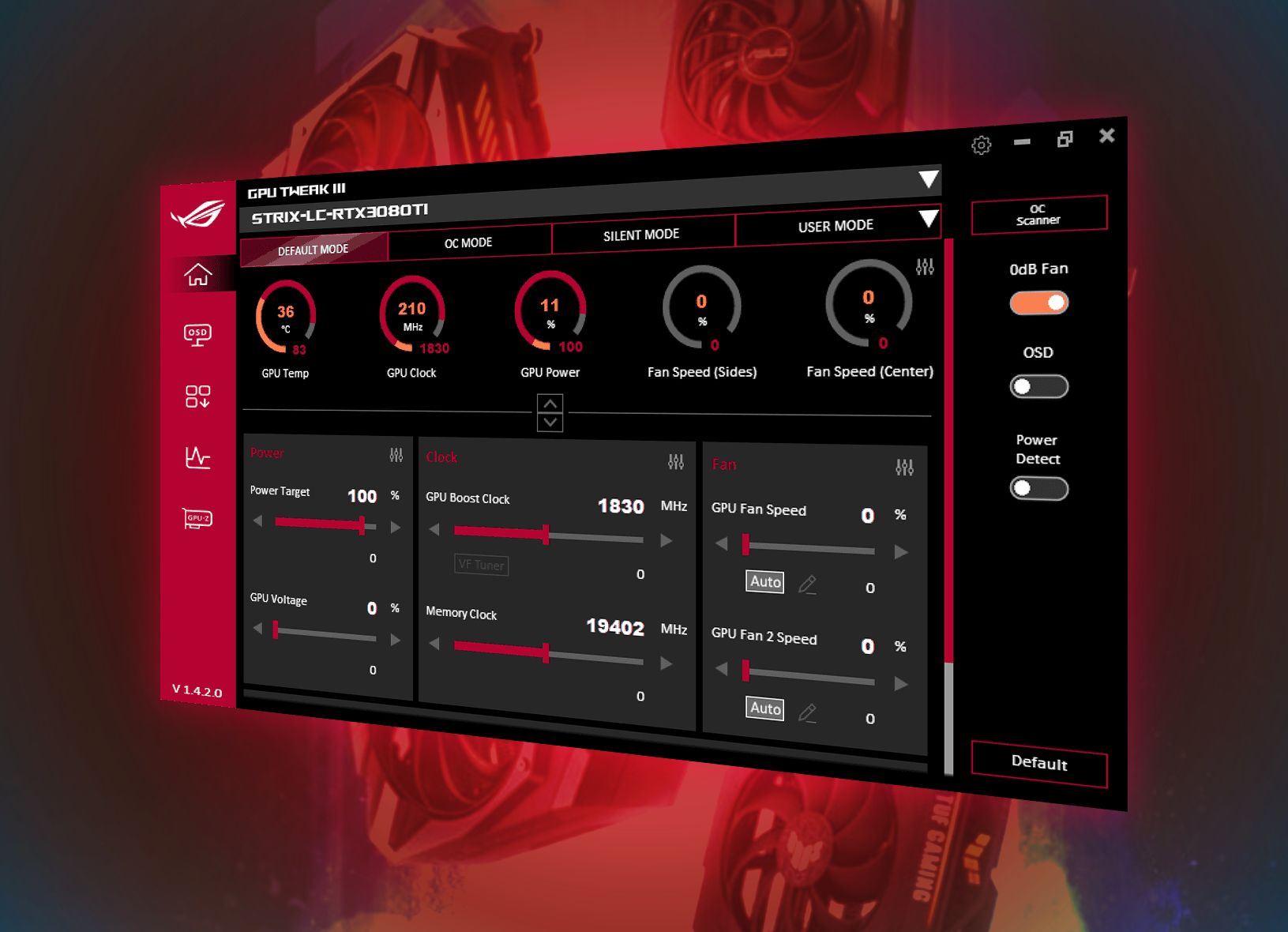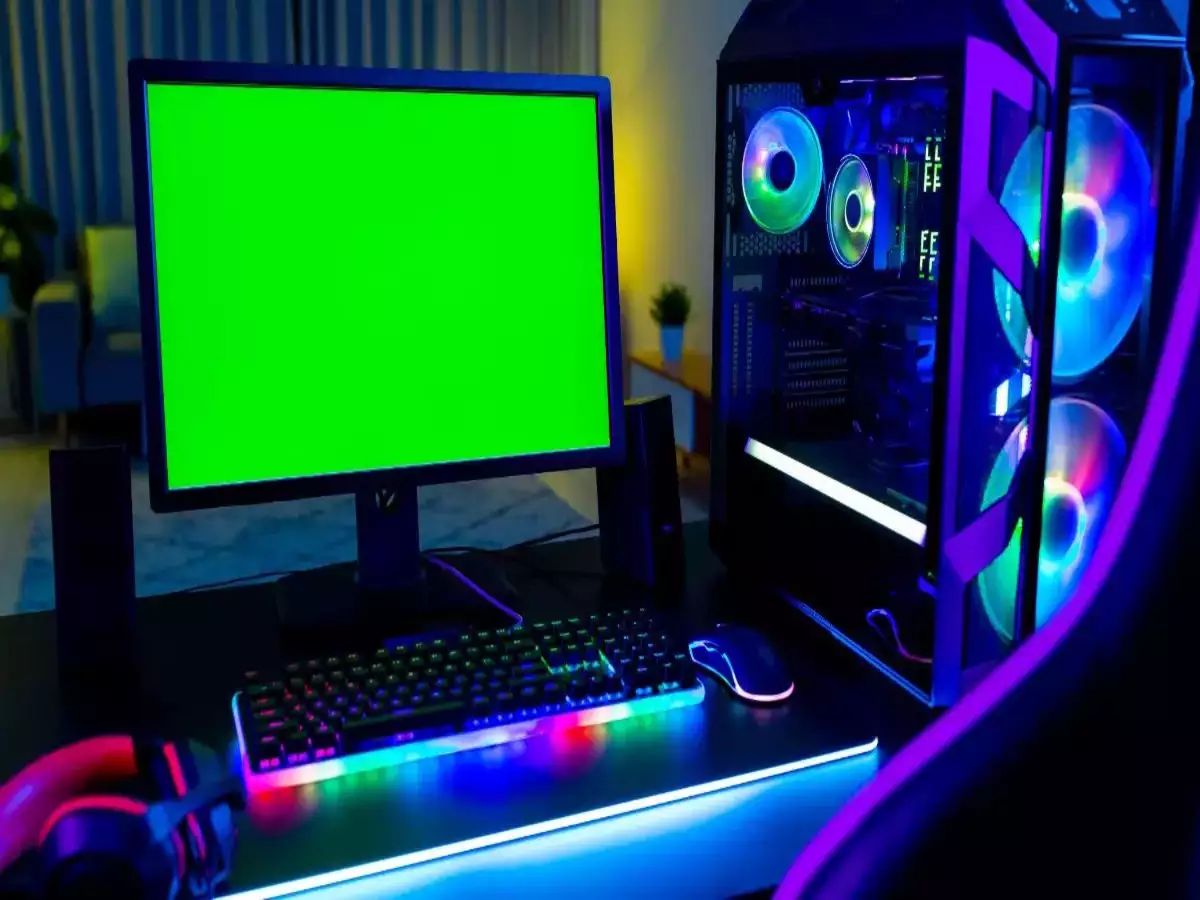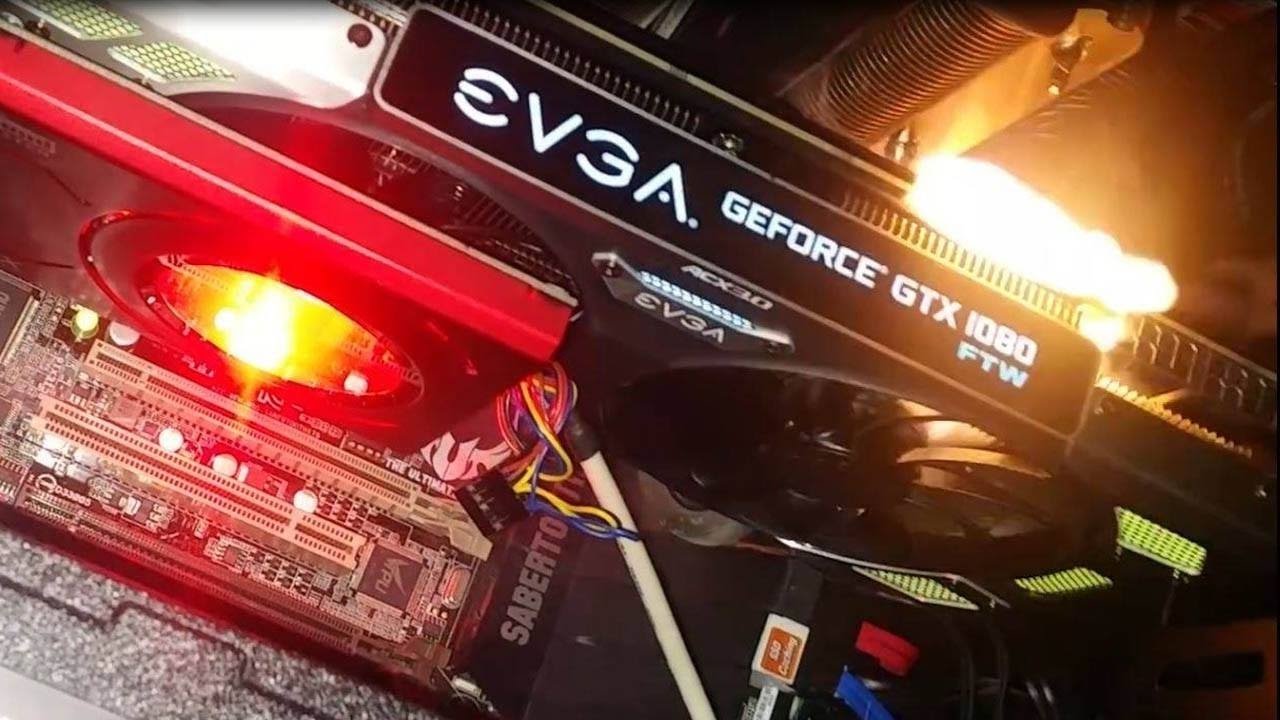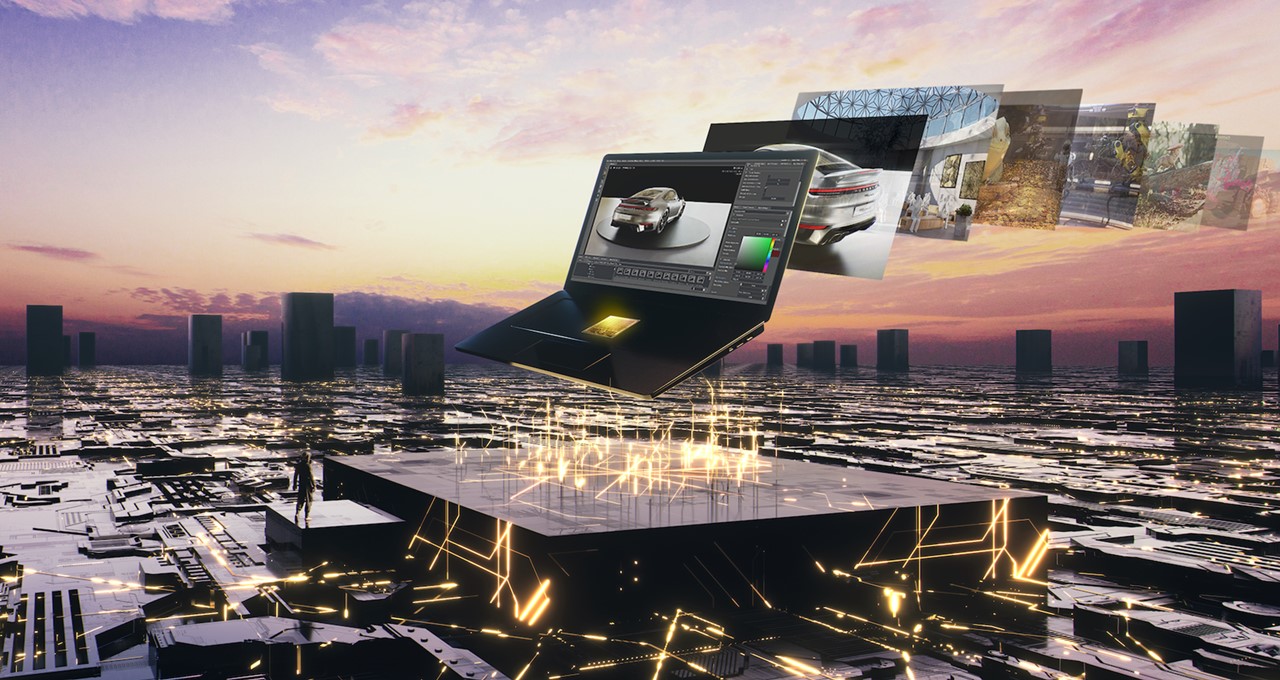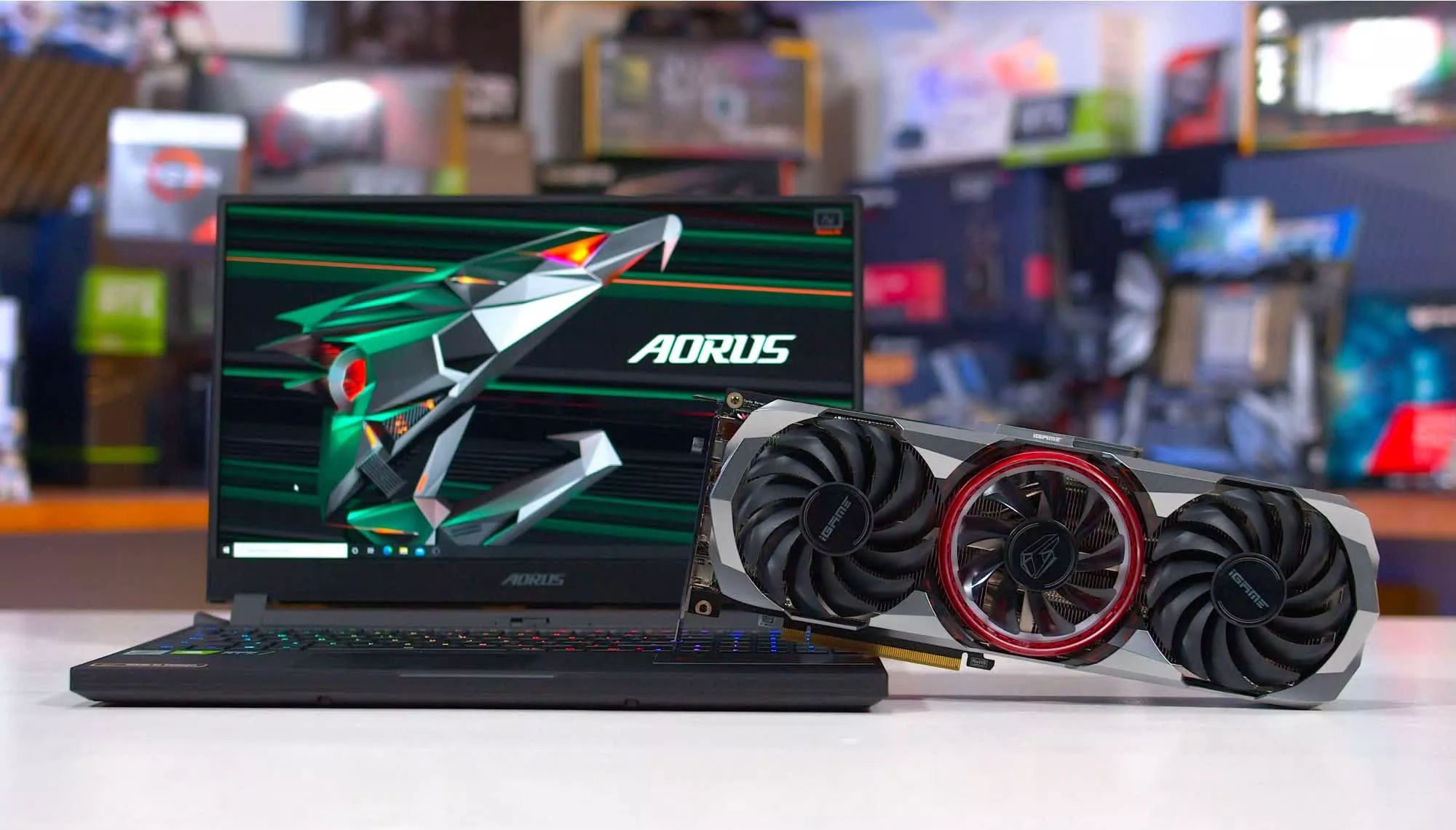Introduction
Welcome to the world of GPU overclocking! If you’re a PC enthusiast or a gamer looking to squeeze every bit of performance out of your graphics card, then overclocking is a term you should be familiar with. Overclocking a GPU can give you a significant boost in gaming performance, allowing you to experience smoother gameplay and improved graphics rendering.
So, what exactly is GPU overclocking? In simple terms, it refers to increasing the clock speed of your graphics processing unit (GPU) beyond its factory-set specifications. The clock speed determines how fast the GPU can process data and perform calculations, effectively influencing its overall performance.
Overclocking a GPU may sound intimidating at first, but it’s a popular practice among tech enthusiasts and gamers who want to push the boundaries of their hardware. However, it’s important to note that overclocking comes with both benefits and potential drawbacks.
In this article, we’ll explore the world of GPU overclocking in more detail. We’ll explain how it works, discuss its benefits, and highlight some potential drawbacks. We’ll also provide safety precautions to ensure a smooth and successful overclocking experience.
Whether you’re a seasoned overclocker or a beginner looking to dip your toes into this fascinating world, read on to learn all about GPU overclocking and how it can elevate your gaming experience.
What is GPU Overclocking?
GPU overclocking is the process of increasing the clock speed of a graphics processing unit (GPU) beyond its stock settings. The clock speed, measured in megahertz (MHz) or gigahertz (GHz), determines how fast the GPU can process data and perform calculations. By overclocking the GPU, you effectively make it run at a higher frequency than it was originally designed for.
Traditionally, GPUs come with pre-set clock speeds that are optimized to balance performance, power consumption, and heat generation. However, these stock settings may not fully harness the potential of the GPU. Overclocking allows you to push the GPU to operate at higher clock speeds, resulting in improved performance and enhanced gaming experiences.
GPU overclocking is popular among gamers, graphic designers, and other professionals who rely on the processing power of their GPUs. By increasing the clock speed, these users can achieve better framerates in video games, render graphics and visual effects faster, and handle computationally intensive tasks more efficiently.
It’s important to note that GPU overclocking is typically performed on dedicated graphics cards used in desktop computers, rather than integrated GPUs found in laptops or other devices. Dedicated graphics cards have dedicated cooling solutions and are more flexible when it comes to adjusting clock speeds and voltages.
Overclocking a GPU involves adjusting the core clock and memory clock frequencies. The core clock speed controls the performance of the GPU’s processor cores, while the memory clock speed influences the speed at which data is read from and written to the GPU’s memory. Both variables play a crucial role in determining overall GPU performance.
It’s worth mentioning that not all GPUs are created equal, and the overclocking potential can vary. Some GPUs may have a higher factory overclock, known as a “super clock” edition, which means they come pre-overclocked by the manufacturer. These GPUs may have a narrower overclocking range compared to non-overclocked versions.
Now that we have a basic understanding of GPU overclocking, let’s delve deeper into the inner workings and benefits of this fascinating practice.
How does GPU Overclocking Work?
To understand how GPU overclocking works, we need to explore the relationship between clock speed, voltage, and performance. When a GPU is manufactured, it is designed to operate within specified clock speeds and voltages to ensure stability and longevity.
By increasing the clock speed through overclocking, you essentially allow the GPU to process data at a faster rate. This results in improved performance, as tasks and calculations can be completed more quickly. However, increasing the clock speed also increases the amount of electrical current flowing through the GPU, which in turn generates more heat.
Managing the heat generated by the GPU is a critical aspect of overclocking. If the temperature exceeds a certain threshold, the GPU can become unstable, leading to crashes, artifacts, or even permanent damage. Therefore, it’s crucial to have proper cooling solutions in place to dissipate the excess heat effectively.
In addition to adjusting the clock speed, overclocking may also involve tweaking the voltage supplied to the GPU. Increasing the voltage allows the GPU to handle higher clock speeds more efficiently, but it also contributes to increased heat output and power consumption.
It’s important to strike a balance when overclocking by finding the highest stable clock speed while keeping temperatures and voltages within safe limits. This can be achieved through a process of trial and error, gradually increasing clock speeds and voltages, and stress-testing the GPU to ensure stability.
Overclocking software utilities, provided by GPU manufacturers or third-party developers, are commonly used to adjust clock speeds, voltages, and fan speeds. These utilities provide an interface for users to fine-tune various settings and monitor crucial metrics such as temperature and utilization.
Modern GPUs may also have built-in features like GPU Boost, which dynamically adjusts the clock speed based on factors such as temperature, power consumption, and workload. Overclocking utilities can work in conjunction with these features to further enhance performance beyond the GPU Boost limits.
Now that we understand the mechanics of GPU overclocking, let’s explore the benefits it can bring to your gaming and graphics-intensive tasks.
Benefits of Overclocking a GPU
Overclocking a GPU can provide several benefits, making it an appealing option for gamers, professionals, and enthusiasts looking to squeeze out the maximum performance from their graphics cards. Let’s explore the advantages of GPU overclocking:
Increased Clock Speed: The primary benefit of GPU overclocking is the ability to increase the clock speed beyond the factory-set limits. This allows the GPU to process data and perform calculations at a faster rate, resulting in improved overall performance.
Improved Gaming Performance: With higher clock speeds, games can run smoother and exhibit better frame rates. Overclocking the GPU can lead to faster rendering times, reduced input lag, and an overall more enjoyable gaming experience, especially in graphics-intensive titles.
Enhanced Graphics Rendering: Overclocking can significantly boost graphics rendering capabilities. Visual effects, textures, and complex lighting can be displayed with greater detail and realism. This can breathe new life into older games or allow you to crank up the settings on newer titles.
Higher Frames per Second (FPS): By increasing the clock speed and processing power, GPU overclocking can result in higher frame rates, delivering smoother gameplay. This can be particularly beneficial in fast-paced action games, where every frame matters for quick reactions and precision movements.
Higher Benchmark Scores: Overclocking your GPU can yield higher scores in benchmark tests, which measure the graphical performance of your system. Achieving top scores in popular benchmarking tools can be a point of pride for enthusiasts and indicate their system’s capability.
Customizability and Performance Tuning: Overclocking provides users with the flexibility to fine-tune their GPU’s performance to suit their specific needs. Whether it’s achieving the best balance between power and performance or maximizing performance for a particular workload, overclocking allows for customization and optimization.
While the benefits of GPU overclocking are undoubtedly appealing, it’s important to be aware of the potential drawbacks and take necessary precautions to ensure a safe and stable overclocking experience.
Increased Clock Speed
One of the most significant benefits of overclocking a GPU is the ability to increase its clock speed beyond its stock settings. The clock speed determines how quickly the GPU can process data and perform calculations, making it a crucial factor in determining overall performance.
By overclocking the GPU, you can raise its clock speeds, which allows it to process graphics data at a faster rate. This results in improved performance, as tasks are completed more quickly and efficiently.
With increased clock speeds, your GPU can handle graphics-intensive tasks, such as rendering high-resolution textures, complex 3D models, and realistic lighting effects, with greater ease. This is particularly beneficial for gamers, as it can lead to smoother gameplay and better frame rates.
When playing games, a higher clock speed means that the GPU can process more frames per second (FPS), resulting in a smoother and more fluid gaming experience. This is especially noticeable in fast-paced games where quick reactions and precise movements are essential.
Moreover, increased clock speeds can greatly benefit graphics professionals and content creators. Whether you’re working with video editing, 3D modeling, or graphic design software, overclocking your GPU can significantly reduce render times and improve workflow efficiency.
It’s important to note that the extent to which you can increase the clock speed can vary depending on factors such as the specific GPU model, the cooling solution, and power delivery capabilities. Some GPUs may have greater overclocking headroom than others, while certain models may be factory overclocked and have limited additional room for manual overclocking.
When overclocking, it’s essential to find the right balance between performance and stability. Pushing the GPU beyond its limits can result in instability, crashes, or even permanent damage. To achieve a stable overclock, it’s necessary to gradually increase the clock speed and rigorously test the GPU for stability under heavy workload conditions.
Overall, the ability to increase the clock speed of a GPU through overclocking offers enthusiasts and gamers the opportunity to maximize their hardware’s potential and extract every bit of performance possible to enhance their gaming and computing experiences.
Improved Gaming Performance
One of the key benefits of overclocking a GPU is the significant improvement in gaming performance. By increasing the clock speed and unlocking the full potential of your graphics card, you can enhance your gaming experience in several ways.
First and foremost, overclocking allows your GPU to handle graphics-intensive games with greater ease. The increased clock speed means that the GPU can process data and perform calculations at a faster rate, resulting in smoother gameplay and improved frame rates. This means that you will experience fewer frame drops, stuttering, and lag, providing a much more immersive and enjoyable gaming experience.
In fast-paced games such as first-person shooters, racing games, or action-adventure titles, where split-second decisions and quick reflexes are crucial, a higher clock speed can give you a competitive edge. It allows the GPU to render and display images quicker, resulting in reduced input lag and more responsive controls.
Furthermore, overclocking your GPU can help you achieve higher frame rates, pushing your gaming visuals beyond what would be achievable at stock settings. This results in smoother animations, sharper details, and more vibrant colors. Games with advanced graphical effects like dynamic lighting, complex particle systems, and realistic textures can truly shine with the increased processing power.
Overclocking is especially beneficial for users with high-resolution monitors or multi-monitor setups. These setups demand more processing power from the GPU to render a larger number of pixels, and overclocking can provide the extra performance needed to maintain smooth gameplay at these higher resolutions.
Another advantage of improved gaming performance through GPU overclocking is the ability to extend the lifespan of your GPU. By overclocking, you can breathe new life into older graphics cards, allowing them to keep up with the demands of modern games without having to invest in a brand new GPU.
It’s worth noting that overclocking is not just limited to boosting frame rates in games. It can also improve performance in other graphics-related tasks, such as video editing, 3D rendering, and photo editing. These applications heavily rely on the GPU’s processing power, and overclocking can significantly reduce rendering times and enhance workflow efficiency.
However, it’s important to mention that the extent of performance gains through overclocking will vary depending on the specific GPU model, cooling solution, and the efficiency of the overclocking process itself. Each GPU has its limits, and pushing it beyond those can lead to instability and decreased performance.
Overall, overclocking your GPU can provide a tangible boost in gaming performance, making your gaming sessions more enjoyable and immersive while allowing you to make the most out of your hardware investment.
Enhanced Graphics Rendering
Another significant benefit of overclocking a GPU is the ability to achieve enhanced graphics rendering. By increasing the clock speed and unlocking the full potential of your graphics card, you can take your visuals to a whole new level of realism and detail.
When playing games or working with graphics-intensive applications, overclocking your GPU can allow it to handle complex graphical effects with greater ease. Textures become crisper, lighting effects become more realistic, and details become more pronounced. This enhanced graphics rendering can significantly elevate the visual quality of your gaming experience or professional work.
With an overclocked GPU, you can enjoy improved anti-aliasing techniques, such as supersampling or multisampling, which smooth out jagged edges of objects in a scene. This results in more realistic and sharper visuals, particularly noticeable on high-resolution displays or when playing games with rich, intricate environments.
Add to that the benefits of overclocking in terms of texture and shadow details. Higher clock speeds allow the GPU to process and render textures at a faster rate. This directly translates to more detailed textures, providing a more immersive and lifelike gaming experience. Shadows become more accurate and dynamic, enhancing the depth and realism of the game world.
Overclocking your GPU can also have a positive impact on post-processing effects, such as motion blur, depth of field, and ambient occlusion. These effects contribute to creating a more cinematic and visually impressive experience, adding depth and realism to the graphics. With an overclocked GPU, you can achieve smoother and more convincing post-processing effects, enhancing the overall visual fidelity of your games or projects.
The increased processing power of an overclocked GPU also improves the performance of physics simulations in games, which rely on the GPU for calculations. Complex physics-based interactions, such as destructible environments, dynamic cloth simulations, or realistic water effects, can be processed more efficiently, resulting in more accurate and realistic physics simulations.
When working with graphic design or 3D modeling software, overclocking your GPU can significantly reduce render times. Real-time previews become smoother, and complex scenes or intricate models can be rendered faster. This allows for a more efficient and productive workflow, enabling graphic professionals to iterate on their designs more quickly.
However, it’s important to note that overclocking your GPU alone may not suddenly turn low-quality graphics into photo-realistic visuals. The overall visual quality is also influenced by the game’s or application’s graphical settings, the optimization of the software, and other hardware components in the system, such as the CPU and RAM.
Overall, overclocking your GPU can provide enhanced graphics rendering capabilities, allowing you to enjoy more visually immersive gaming experiences and achieve faster render times in graphics-intensive applications.
Higher Frames per Second (FPS)
One of the most sought-after benefits of GPU overclocking is the ability to achieve higher frames per second (FPS) in games. FPS refers to the number of individual images, or frames, displayed per second, and it directly influences the smoothness of gameplay and overall visual experience.
By overclocking your GPU, you can increase its clock speed and unlock its full processing power. This allows the GPU to render frames more quickly and efficiently, resulting in higher FPS in games. The higher the FPS, the smoother and more responsive the gameplay becomes.
When playing fast-paced action games, a high FPS is essential. It ensures that the visuals are rendered and displayed quickly, reducing motion blur and providing a more immediate response to player input. Actions, such as aiming, shooting, and maneuvering, become more precise and fluid, giving you a competitive edge in online multiplayer scenarios.
Not only does higher FPS improve gameplay responsiveness, but it also enhances the overall visual experience. With a higher FPS, animations become smoother, making movements and camera panning look more natural. This results in a more immersive gaming experience and can help you notice and react to details more quickly.
In addition to smoother gameplay, higher FPS can also improve the visibility of smaller details in fast-paced games. With more frames being displayed per second, your eyes have more information to process, allowing you to better track moving objects, spot enemies hiding in the distance, or react to sudden changes in the game environment.
Another advantage of higher FPS is reduced input lag. Input lag refers to the delay between when you perform an action, such as pressing a button or moving the mouse, and when the corresponding action occurs on the screen. By achieving higher FPS through GPU overclocking, you can reduce this delay, resulting in a more responsive and seamless gaming experience.
Furthermore, higher FPS can also benefit users with high-refresh-rate monitors. Monitors with refresh rates of 120Hz or 144Hz can display up to 120 or 144 frames per second, respectively. By overclocking your GPU and achieving these higher frame rates, you can take full advantage of the capabilities of these monitors, resulting in even smoother and more fluid visuals.
It’s important to note that the impact of higher FPS will vary depending on the hardware configuration, the specific game, and the overall system performance. Some games may see more noticeable improvements with higher FPS, while others may have diminishing returns beyond a certain point. Additionally, achieving and maintaining higher FPS may also require adjustments to other in-game settings and hardware components, such as the CPU and RAM.
Overall, overclocking your GPU to achieve higher FPS is a significant benefit for gamers, providing smoother gameplay, reduced input lag, and an overall more enjoyable and immersive gaming experience.
Higher Benchmark Scores
When it comes to assessing the performance of your GPU, benchmarking tools provide a standardized and objective measure. One of the notable benefits of overclocking your GPU is the potential to achieve higher benchmark scores, showcasing the increased capabilities of your graphics card.
Benchmark scores are numerical or graphical representations of how well your GPU performs in comparison to other GPUs. They are often obtained by running benchmarking software that puts the GPU through a series of tests designed to measure its graphics rendering capabilities, computational power, and overall performance.
By overclocking your GPU, you can increase its clock speed and unlock its full potential. This allows the GPU to process data and perform calculations at a faster rate, which can result in higher benchmark scores. Achieving higher scores demonstrates the performance gains obtained through overclocking, making it a satisfying measure of the improved capabilities of your GPU.
To put it into perspective, a higher benchmark score indicates that your GPU can handle more demanding games or applications with greater ease. This can be especially advantageous for competitive gamers or professionals who rely on their GPU’s performance to tackle graphics-intensive tasks.
Higher benchmark scores can also be a point of pride for hardware enthusiasts. A top-notch score in popular benchmarking tools signifies that your GPU is among the best-performing models available. This can make a difference when comparing your system’s performance to others or when seeking validation for your hardware choices.
It’s worth noting that achieving higher benchmark scores through GPU overclocking is influenced by various factors. This includes the specific overclocking settings, the efficiency of the cooling solution, the power delivery capabilities of your system, and the optimization of the software being benchmarked.
However, it’s important to remember that benchmark scores are just one aspect of GPU performance evaluation. Real-world performance, such as frame rates in games or rendering times in professional applications, can differ from benchmark scores due to different optimization and utilization scenarios.
While achieving higher benchmark scores can be impressive, it’s vital to consider the overall performance gains in your intended use cases. Prioritize stable and reliable performance over chasing the highest benchmark scores, as stability and longevity are crucial factors in ensuring a seamless and enjoyable user experience.
In summary, overclocking your GPU has the potential to elevate benchmark scores, showcasing the increased capability and performance of your graphics card. However, it’s essential to understand that higher benchmark scores should be considered alongside real-world performance in your specific use cases.
Potential Drawbacks of GPU Overclocking
While GPU overclocking offers numerous benefits, it’s important to be aware of the potential drawbacks that come with pushing your graphics card beyond its stock settings. It’s crucial to consider these potential downsides before deciding to overclock your GPU:
Increased Power Consumption: Overclocking your GPU often leads to increased power consumption. As the clock speed is raised and more voltage is applied, the GPU requires additional electrical power to sustain the higher performance. This can result in increased electricity bills and may put a higher load on your power supply unit.
Increased Heat Generation: Overclocking typically results in higher heat generation due to the increased voltage and power consumption. This puts extra strain on the GPU’s cooling system, potentially causing higher temperatures. If not properly managed, the increased heat can lead to stability issues, reduced lifespan, or even permanent damage to the GPU.
Decreased GPU Lifespan: Overclocking can potentially shorten the lifespan of your GPU. Running the GPU at higher clock speeds and voltages can subject it to greater stress than it was originally designed for. This can accelerate wear and tear on the GPU’s components and lead to a shortened lifespan, especially if the GPU is not adequately cooled or if excessive voltages are applied.
Stability Issues: Overclocking a GPU involves pushing it beyond its specified limits. This can result in stability issues such as crashes, freezes, or system instability. Each GPU has its own overclocking limits, and it may take some time and experimentation to find a stable overclock that works reliably for your specific GPU model.
Compatibility and Driver Issues: Some games or applications may not function properly or may exhibit graphical glitches when the GPU is overclocked. Issues can arise due to compatibility problems with specific software or driver conflicts. It’s important to monitor compatibility and ensure that your system remains stable and runs as expected during overclocking.
Voiding Warranty: Overclocking your GPU may void its warranty with the manufacturer. While some manufacturers may have lenient policies regarding overclocking, it’s essential to check the terms and conditions of your warranty before proceeding. If your GPU experiences any issues while overclocked, you might not be eligible for warranty support or repairs.
Data Loss and System Instability: Overclocking can introduce system instability and increase the risk of data loss. Unstable overclocks can cause crashes or system failures, potentially leading to the loss of unsaved data. It’s crucial to back up important files and regularly save your work to minimize the risk of data loss during overclocking.
It’s important to note that not all GPUs and systems are the same, and the potential drawbacks can vary based on specific hardware configurations and overclocking practices. By taking necessary precautions and following safe overclocking procedures, you can mitigate some of these drawbacks and enjoy the benefits of improved performance.
Increased Power Consumption
One of the potential drawbacks of GPU overclocking is the increased power consumption that accompanies the higher clock speeds and voltages. When you overclock your GPU, the additional electrical power required to sustain the increased performance can result in higher power consumption.
As the clock speed is raised and more voltage is applied to the GPU, it needs more power to operate effectively. This increased power consumption can have several implications. Firstly, it can lead to higher electricity bills since your system will draw more power under load. Overclocking enthusiasts should consider this additional cost when deciding to overclock their GPUs.
Furthermore, the increased power consumption puts a higher load on your power supply unit (PSU). PSU manufacturers typically rate their power supplies based on their maximum power output. If you exceed the capacity of your PSU due to overclocking, it may result in instability, crashes, or even system failure. It’s essential to ensure that your power supply can handle the additional power requirements of an overclocked GPU.
In certain cases, the increased power consumption can also lead to a higher operating temperature. When more power is drawn by the GPU, it generates more heat. This can put additional strain on the GPU’s cooling system, potentially leading to higher temperatures. Overheating can result in reduced long-term stability, thermal throttling, or even permanent damage to the GPU if not properly managed.
To mitigate the increased power consumption and heat generation associated with overclocking, proper cooling becomes crucial. Ensuring that your system has adequate airflow and a reliable cooling solution, such as high-performance fans or liquid cooling, can help dissipate the excess heat and maintain stable operation.
It’s essential to be mindful of the overall power draw of your system when overclocking. Not only does the GPU draw more power, but other components like the CPU, memory, and peripherals also contribute to the overall power consumption. If your power supply is already operating close to its maximum capacity, overclocking your GPU may push it over the limit and compromise system stability.
When overclocking, it’s recommended to monitor the power consumption of your GPU using software utilities provided by GPU manufacturers or third-party apps. These utilities can provide real-time power usage data, allowing you to assess the impact of overclocking on power consumption and make informed decisions.
Overall, increased power consumption is a potential drawback of GPU overclocking. Before deciding to overclock your GPU, it’s important to evaluate your power supply’s capacity, consider the additional electricity costs, and ensure proper cooling to maintain stable operation and minimize the impact on your system’s overall power consumption.
Increased Heat Generation
When overclocking a GPU, one of the notable consequences to be aware of is the increased heat generation. As you raise the clock speeds and voltages to achieve higher performance levels, the GPU also generates more heat as a byproduct of its increased power consumption.
The increased heat generation can pose several challenges and potential drawbacks. Excessive heat can lead to stability issues, reduced lifespan, or even permanent damage to the GPU if not properly managed. It’s crucial to understand the importance of maintaining optimal operating temperatures to ensure the longevity and stability of your overclocked GPU.
Overclocking enthusiasts should pay close attention to the cooling capabilities of their system. The cooling solution, including fans, heat sinks, or liquid cooling, plays a crucial role in dissipating the excess heat and maintaining the GPU’s temperature within safe limits. Improper cooling can result in elevated temperatures, which may cause thermal throttling, reduced performance, or instabilities under heavy loads.
The increased heat generation can also affect other components within your system. It can impact the overall operating temperature of your computer, potentially causing increased fan speeds or triggering thermal protection mechanisms. To mitigate this, it’s important to ensure proper airflow within the case by maintaining clean and unobstructed ventilation paths.
In addition to verifying your cooling system’s efficiency, monitoring temperatures is essential. Modern GPUs come equipped with temperature sensors that monitor the GPU’s temperature in real-time. Software utilities provided by GPU manufacturers or third-party apps can display these temperature readings, allowing you to keep a close eye on the GPU’s thermal performance during overclocking.
It’s important to note that each GPU model and individual GPU chip may have different thermal characteristics and tolerance levels. Some GPUs may naturally run hotter even at stock settings, while others may have better thermal efficiency. This means that the overclocking headroom may vary from GPU to GPU, and it’s crucial to consider this when planning for overclocking.
When overclocking, it’s best to gradually increase clock speeds and voltages, accompanied by rigorous stress testing and temperature monitoring. This approach allows you to find the optimal balance between performance and temperature control, ensuring stable operation under different workloads and environmental conditions.
Lastly, proper maintenance and regular cleaning of your system can help ensure efficient heat dissipation. Dust accumulation on the GPU, fans, and heat sinks can impair the cooling performance and increase operating temperatures. Routine cleaning and inspections can mitigate this risk and maintain optimal cooling efficiency for your overclocked GPU.
In summary, increased heat generation is an inherent result of GPU overclocking. Proper cooling, monitoring temperatures, and regular maintenance are vital to control temperatures and prevent potential stability issues or damage to the GPU, allowing for a stable and long-lasting overclocking experience.
Decreased GPU Lifespan
When considering GPU overclocking, one of the potential drawbacks to keep in mind is the potential for a decreased GPU lifespan. Overclocking involves pushing the GPU beyond its factory-set specifications and operating it at higher clock speeds and voltages to achieve better performance.
It’s important to understand that every GPU has a designed lifespan, which is based on factors such as the quality of the components, thermal design, and the stress it undergoes during typical usage scenarios. Overclocking increases the stress on the GPU by generating more heat and subjecting the components to higher voltages than they were originally intended for.
As the GPU runs at higher clock speeds and voltages, it generates more heat, which can impact the longevity of the GPU. Heat is a primary factor in accelerating the degradation of electronic components. Prolonged exposure to high temperatures can cause thermal stress and lead to potential issues such as component failure, reduced stability, or even permanent damage.
It’s worth noting that various factors will influence the extent of the impact on the GPU’s lifespan due to overclocking. These factors include the overall cooling solution, ambient temperatures, the quality of the GPU’s components, the stability of the overclock, and the diligence in monitoring and managing temperatures.
Proper cooling plays a critical role in maintaining a safe operating temperature for an overclocked GPU. Adequate airflow, high-performance fans, or liquid cooling solutions help dissipate the excess heat, ensuring that the GPU remains within a safe temperature range. Maintaining recommended temperature limits can help preserve the longevity of the GPU and reduce the risk of premature failure.
Additionally, monitoring and managing temperatures through software utilities provided by GPU manufacturers or third-party applications is essential. Regularly checking temperature readings allows users to identify potential issues or excessive heat levels. Adjusting the overclock settings or optimizing the cooling solution based on these temperature readings can help maintain a safer operating environment for the GPU.
It’s important to strike a balance between pushing the GPU’s performance and ensuring its long-term health. Finding a stable overclock that delivers the desired performance boost without excessively increasing heat generation or compromising stability is crucial to maintain the GPU’s lifespan.
Extending the lifespan of an overclocked GPU involves taking proper precautions, such as regular cleaning of the cooling system to prevent dust buildup, avoiding excessive voltage adjustments, and adhering to safe temperature limits. Implementing these precautions, along with periodic monitoring and maintenance, can help mitigate the risk of decreased GPU lifespan.
While the decreased lifespan is a potential concern of GPU overclocking, it is worth noting that overclocking within safe and reasonable limits, and with proper maintenance, can still result in a significant performance boost that allows you to enjoy better gaming experiences or meet the demands of graphics-intensive tasks.
Stability Issues
One potential drawback of GPU overclocking is the potential for stability issues. When you push your GPU beyond its factory-set specifications and increase the clock speeds and voltages, it can lead to instability in your system.
Overclocking involves increasing the GPU’s clock speed and voltage to achieve higher performance levels. However, pushing the GPU too far can result in instability, crashes, freezes, or unexpected system resets. These stability issues can disrupt your gaming or work sessions, potentially resulting in data loss or interrupted workflows.
Each GPU has its overclocking limits, and finding the right balance between performance and stability is crucial. Pushing the GPU beyond its capabilities or applying excessive voltage can cause instability, as the components may struggle to handle the increased workload or temperature generated by overclocking.
It’s important to remember that stability issues can manifest differently for every user and system configuration. What works for one GPU or application may not yield the same stability results for another. Some GPUs may have more headroom for overclocking, while others may reach stability limits more quickly.
Ensuring proper cooling for your GPU is vital in mitigating stability issues. As the GPU generates more heat during overclocking, it’s necessary to have adequate cooling solutions, such as well-placed fans, heat sinks, or liquid cooling. Effective cooling helps maintain stable temperatures and reduces the risk of overheating-induced instability.
To address stability issues, thorough testing and stress tests are essential. Stress testing software tools are available to simulate intensive workloads and monitor the GPU’s performance under these conditions. By stress-testing your overclocked GPU, you can identify any stability issues and fine-tune your overclock settings accordingly.
Having a stable overclock not only improves the overall performance of your GPU but also ensures a consistent and reliable gaming or work experience. Stability is especially important in critical tasks such as video editing, 3D rendering, or running resource-intensive applications where sudden crashes or freezes can result in data loss or project delays.
It’s worth mentioning that achieving stability doesn’t guarantee absolute immunity to occasional crashes or system instabilities. Factors such as driver compatibility, software optimization, or conflicts with other hardware components can also contribute to stability issues. Keeping all your drivers up to date and using the latest versions of your overclocking software can help address such compatibility issues.
Achieving stability with an overclocked GPU requires patience, thorough testing, and an understanding of your specific GPU model’s capabilities. It’s essential to strike a balance between pushing for higher performance and maintaining a stable and reliable system.
Ultimately, stability issues are part of the overclocking process, and not all GPUs will overclock to the same extent. By being diligent in stress testing, monitoring temperatures, and making incremental adjustments, you can maximize performance while minimizing stability concerns and enjoying a stable system with your overclocked GPU.
Safety Precautions for GPU Overclocking
GPU overclocking can be an exciting way to boost performance, but it’s essential to take proper safety precautions to ensure a smooth and successful overclocking experience. Here are some important safety measures to follow:
Proper Cooling: Overclocking can generate more heat, so it’s crucial to have efficient cooling to dissipate the extra heat generated by the GPU. Ensure that your system has proper airflow, clean your cooling fans regularly, and consider investing in high-performance cooling solutions, such as aftermarket graphics card coolers or liquid cooling.
Voltage Adjustment: When overclocking the GPU, avoid applying excessive voltage, as it can lead to increased heat generation and potential stability issues. Only adjust the voltage if necessary and find the optimal balance between performance and temperatures. It’s crucial to follow manufacturer guidelines and not exceed the safe voltage limits specified for your GPU model.
Monitoring and Testing: Utilize software utilities provided by GPU manufacturers or third-party applications to monitor key metrics such as temperature, voltage, and fan speed. Regularly check these metrics during overclocking to ensure that your GPU is operating within safe limits and to quickly identify any potential stability issues. Additionally, perform stress tests to assess the stability of your overclocked GPU under heavy loads and prolonged periods of usage.
Incremental Changes: When overclocking, make changes in small increments rather than making drastic adjustments all at once. Gradually increase the clock speeds and test stability after each adjustment to find the optimal overclock that provides a performance boost without compromising stability. This approach allows you to identify the safe and stable limits of your GPU’s overclocking potential.
Backup and Data Protection: Before embarking on GPU overclocking, ensure that you have a backup of your important files and data. Overclocking can sometimes result in system instability or crashes, which may lead to data loss if not properly managed. Regularly save your work and consider using automated backup solutions to minimize the risk of data loss during the overclocking process.
Research and Documentation: Before overclocking your GPU, thoroughly research and understand your specific GPU model’s capabilities and limitations. Consult manufacturer documentation, user guides, and online resources to gain insights into recommended overclocking techniques and safe operating parameters. Additionally, seek out user experiences and forums dedicated to GPU overclocking to gather tips, insights, and potential solutions to common issues.
Warranty Considerations: Keep in mind that overclocking your GPU may void the manufacturer’s warranty. Review the warranty terms and conditions before proceeding with overclocking. Understand the risks involved and consider the potential loss of warranty coverage should any issues arise during or after the overclocking process.
By following these safety precautions, you can ensure a safer and more successful GPU overclocking experience. Remember that each GPU is unique, and finding the optimal balance between performance and stability may require some trial and error. Patience, careful monitoring, and adherence to safety guidelines will help you achieve the best results while keeping your GPU and system running smoothly.
Proper Cooling
Proper cooling is a crucial aspect of GPU overclocking to ensure the stability and longevity of your graphics card. Overclocking generates more heat due to increased power consumption and higher clock speeds, making effective cooling essential in maintaining safe operating temperatures.
When overclocking your GPU, it’s important to ensure that your system has adequate airflow to dissipate the excess heat generated. Proper airflow helps remove hot air from the components and brings in cooler air to cool down the GPU and other crucial components. Consider the following aspects of cooling when overclocking your GPU:
Airflow and Fan Placement: Ensure that your system has proper airflow by positioning fans strategically. Place intake fans at the front or bottom of the case to draw in cool air, while exhaust fans should be placed at the top or rear to expel hot air. Make sure that cables and components in the case do not obstruct airflow and impede cooling efficiency.
Heat Sink and Thermal Interface Material (TIM): The heat sink on your GPU plays a critical role in dissipating heat. Make sure it is clean and free from dust or debris, which can impair its cooling efficiency. Additionally, consider performance-enhancing heat sinks or aftermarket cooling solutions to improve heat dissipation. Applying high-quality thermal interface material between the GPU and heat sink can also aid in better heat transfer.
Fan Speed and Control: Adjusting the fan speed can help maintain lower temperatures under heavy load. Many GPUs allow for manual fan control through software utilities provided by the manufacturer or third-party applications. Increasing the fan speed during overclocking can help keep temperatures within safe limits, though it may result in increased noise levels due to higher fan RPM.
Liquid Cooling: Consider liquid cooling solutions if you want to achieve even better heat management. Liquid cooling uses a radiator and tubing filled with coolant to dissipate heat more efficiently compared to air cooling. This can result in lower GPU temperatures and potentially allow for higher overclocking capabilities. However, liquid cooling may require additional setup and maintenance.
Case and Cable Management: Proper cable management can contribute to better airflow within your system. Organize cables neatly and away from key components, ensuring that they do not block airflow or impede cooling. Using cable ties or cable management solutions can help in keeping your system well-organized and maximize cooling efficiency.
Cleaning and Maintenance: Regularly clean your system to remove dust and debris that can accumulate on fans, heat sinks, or air vents. Dust buildup hinders airflow and can result in higher temperatures. Use compressed air, a soft brush, or specialized cleaning tools to remove dust from components, ensuring optimal cooling performance.
Ultimately, investing in proper cooling solutions and maintaining a clean and well-ventilated system is crucial for achieving stable and reliable overclocks. By keeping your GPU temperatures under control during overclocking, you can help prevent thermal throttling, performance drops, or even hardware damage.
Keep in mind that every GPU model performs differently, and the efficiency of cooling solutions can vary. Monitoring your GPU’s temperature using software utilities provided by the manufacturer or third-party applications is essential to ensure safe operating temperatures and identify potential cooling issues. Adjusting your overclock settings or optimizing your cooling setup based on temperature readings will help maintain a stable overclock and improve the lifespan of your GPU.
Voltage Adjustment
When overclocking your GPU, one of the key considerations is voltage adjustment. While increasing the voltage can help stabilize higher clock speeds, it’s important to approach voltage adjustment with caution as it can impact both the performance and longevity of your graphics card.
Voltage adjustment involves increasing or decreasing the amount of power supplied to the GPU to support higher clock speeds and ensure stability during overclocking. When increasing the clock speed, the GPU may require additional voltage to maintain stability under the increased workload.
However, increasing the voltage can also result in higher temperatures and power consumption. Higher voltages generate more heat, increasing the strain on the GPU’s cooling solution. Thus, it’s crucial to find the right balance between performance gains and maintaining safe temperature limits.
It’s important to note that the optimal voltage level for overclocking varies for each GPU. Not all GPUs respond to voltage adjustments in the same way, and some may require more or less voltage to achieve stable overclocks. Manufacturer guidelines and recommended voltage ranges can provide a starting point, but individual testing and monitoring are necessary to find the ideal voltage for your specific GPU.
Excessive voltage adjustments can have negative consequences. High voltages can lead to increased heat generation and cause temperatures to rise beyond safe operating limits. This can result in instability, crashes, or even permanent damage to the GPU if not properly managed. It’s crucial to monitor temperature levels when adjusting voltage and ensure that they remain within acceptable ranges.
When making voltage adjustments, it’s recommended to make incremental changes and test for stability after each adjustment. Gradually increase the voltage while stress testing your GPU to assess stability and temperature performance. This approach allows for a more controlled and systematic process, ensuring that you find the optimal voltage that maximizes performance while keeping temperatures and power consumption in check.
It’s also important to consider the power delivery capabilities of your system. When adjusting voltage, ensure that your power supply unit (PSU) provides adequate power, stability, and efficiency. A high-quality PSU with sufficient wattage can help maintain consistent voltage levels and minimize potential voltage fluctuations that could impact GPU stability.
Lastly, keep in mind that raising the voltage does not always guarantee better overclocking results. There may be diminishing returns where the additional voltage may not provide noticeable performance gains or stability improvement. Additionally, higher voltages can also increase the wear and tear on the GPU’s components, potentially impacting its overall lifespan.
Overall, voltage adjustment is a key consideration in GPU overclocking. It can impact both performance and the long-term health of your graphics card. By proceeding with caution, conducting proper testing, and monitoring temperature levels, you can find the optimal voltage settings that balance stability, performance gains, and maintaining safe operating conditions for your GPU.
Monitoring and Testing
When it comes to GPU overclocking, monitoring and testing are essential steps to ensure stability, performance, and longevity. By closely monitoring the GPU’s metrics and conducting thorough testing, you can make informed decisions, optimize your overclock settings, and maintain a reliable and efficient system.
Monitoring software utilities provided by GPU manufacturers or third-party applications allow you to keep a close eye on key metrics such as temperature, voltage, clock speeds, fan speeds, and memory usage. These tools provide real-time data, allowing you to monitor the impact of your overclock settings on these crucial parameters.
Temperature monitoring is particularly important during GPU overclocking. Excessive heat can lead to instability, thermal throttling, or even permanent damage to the GPU. By monitoring temperatures, you can ensure that the GPU remains within safe operating limits and take necessary actions if temperatures approach dangerous levels.
Stress testing is a vital step in assessing the stability of your overclocked GPU under heavy workloads. Stress testing software tools, such as FurMark or 3DMark, simulate intensive workloads to push the GPU to its limits. These stress tests help identify potential stability issues, crashes, or artifacts that may occur during prolonged and demanding usage scenarios.
It’s important to conduct stress tests for a significant duration, ensuring that the GPU remains stable under sustained high loads. Keep an eye on both temperature readings and the behavior of the GPU during stress tests, as stability under these conditions is crucial for ensuring reliability and preventing system crashes during real-world usage.
During testing, it’s necessary to make incremental changes to your overclock settings and test for stability after each adjustment. This approach allows you to pinpoint the optimal settings that provide a performance boost while maintaining stability. If your GPU becomes unstable during testing, scale back the overclock settings or consider adjusting voltage levels to improve stability.
Benchmarking is another valuable tool for evaluating the impact of overclocking on your GPU’s performance. Benchmark tests provide standardized measurements, allowing you to compare your GPU’s performance against others and assess the effectiveness of your overclocking efforts. Popular benchmarking tools like 3DMark or Unigine Heaven can provide valuable insights into the GPU’s performance gains achieved through overclocking.
It’s crucial to note that stability during stress testing and benchmarking does not guarantee absolute stability during all applications. Some games or other software may stress the GPU differently, and stability may vary across different workloads. Therefore, it’s important to test stability in real-world scenarios by running your most demanding applications or games to ensure dependable performance.
Monitoring and testing should be ongoing processes, not just initial steps. Regular monitoring of temperatures, clock speeds, and stability during real-world usage is essential to ensure that your overclocked GPU remains reliable over time. Adjustments to overclock settings or cooling solutions may be necessary as environmental conditions or usage patterns change.
By diligently monitoring and thoroughly testing your overclocked GPU, you can identify and address any stability issues, optimize your overclocking settings, and maximize the performance gains while maintaining a stable and dependable system.
Conclusion
GPU overclocking can be an exciting venture for enthusiasts and gamers looking to maximize the performance of their graphics card. By increasing the clock speeds and potentially adjusting voltages, you can unlock the full potential of your GPU, resulting in improved gaming performance, enhanced graphics rendering, and higher benchmark scores.
However, it’s important to approach GPU overclocking with caution and adhere to proper safety precautions. Increased power consumption, heat generation, and potential stability issues are potential drawbacks that need to be considered. Proper cooling, voltage adjustment, monitoring, and testing play crucial roles in ensuring a stable and successful overclocking experience.
Moreover, understanding the limitations and capabilities of your specific GPU model is essential. Every GPU is unique, and the overclocking potential can vary. Through research, monitoring, and testing, you can find the optimal overclock settings that balance performance gains and stability for your GPU.
It’s important to consider the potential trade-offs of GPU overclocking, such as increased power consumption, heat generation, decreased GPU lifespan, and the possibility of voiding warranties. Overclocking should be approached with a realistic expectation of the performance gains and careful consideration of the potential risks involved.
Ultimately, GPU overclocking should be seen as a journey of exploration and optimization. It requires patience, attention to detail, and a willingness to fine-tune your settings to achieve the best possible results. By following the safety precautions, monitoring your GPU, and understanding its limitations, you can push the boundaries of your graphics card’s performance and unlock its full potential.
Remember to regularly monitor temperatures, perform stress tests, and stay updated with the latest software updates and drivers. With the right approach, GPU overclocking can provide a significant boost in performance, allowing for smoother gameplay, better graphics rendering, and an overall more enjoyable and immersive gaming and computing experience.







